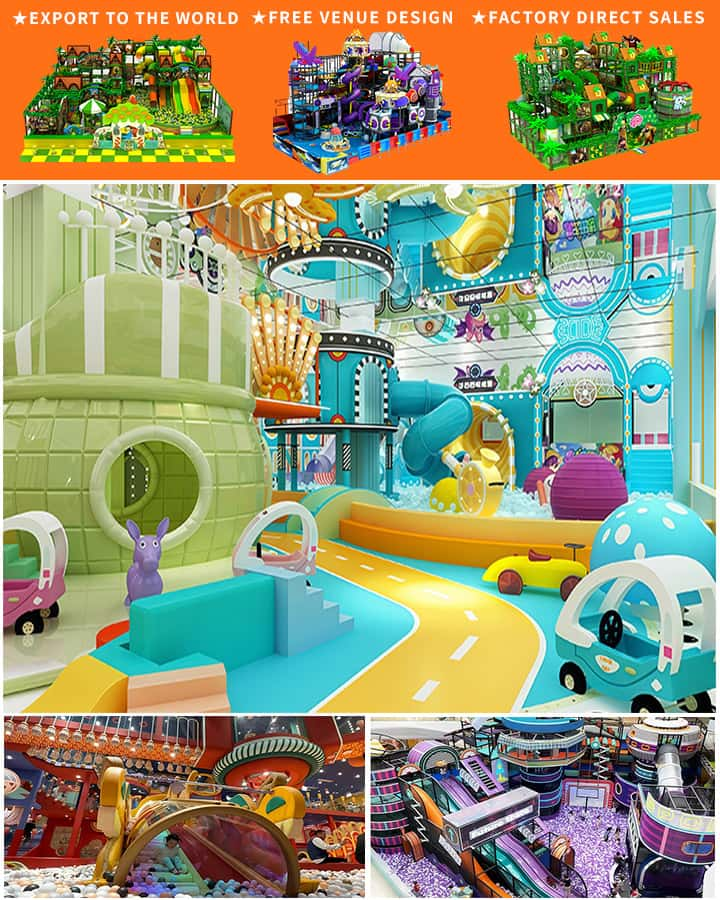When it comes to the joy and safety of children, soft play equipment stands out as an indispensable element in both homes and commercial spaces. Designed specifically to cater to the needs of young ones, this type of equipment provides a safe and engaging environment that stimulates physical activity, creativity, and social interaction. This ultimate guide will explore the myriad benefits, types, and considerations for choosing the best soft play equipment for kids.
Benefits of Soft Play Equipment
- Physical Development: Children’s gross motor skills are enhanced through activities such as climbing, jumping, and balancing. Soft play equipment like foam pits and climbing frames provide excellent opportunities for physical exercise in a controlled and safe manner.
- Cognitive Growth: Interactive play elements, including puzzles and sensory toys, can help develop problem-solving skills and cognitive abilities. Engaging with different textures and shapes also fosters sensory exploration.
- Social Skills: Group play areas encourage cooperation and communication among children. Sharing space and resources in a soft play environment teaches essential social etiquette and teamwork.
- Safety: One of the most significant advantages of soft play equipment is its design, which minimizes the risk of injury from falls or collisions. The use of padded surfaces and rounded edges ensures a safer play experience.

Types of Soft Play Equipment
- Indoor Playgrounds: These are comprehensive setups often found in dedicated children’s facilities, featuring multiple zones for climbing, sliding, and jumping. They are designed to keep kids entertained for hours while ensuring safety.
- Bouncy Castles: A staple in parties and events, bouncy castles offer endless fun with their inflatable structures. They come in various themes and sizes, making them perfect for both indoor and outdoor use.
- Foam Climbers: Lightweight and versatile, foam climbers allow kids to scale heights without the associated risks. Their soft material makes them ideal for home settings where supervision might be more relaxed.
- Interactive Play Zones: Featuring elements like ball pits, tunnels, and obstacle courses, these zones combine physical activity with sensory engagement, keeping children thoroughly engaged.
Considerations for Choosing Soft Play Equipment
- Age Appropriateness: Ensure that the equipment suits the age range of the children using it. Some items may be too challenging or unsafe for younger kids, while older children might find certain play elements boring.
- Space Requirements: Assess the available space in your home or facility. Larger pieces like inflatable slides require ample room, while smaller items like foam blocks can fit into tighter spaces.
- Material Quality: Opt for high-quality, non-toxic materials that can withstand wear and tear. Safety should always be a priority, so check for certifications and compliance with safety standards.
- Ease of Cleaning: Kids inevitably make a mess, so choose equipment that is easy to clean and maintain. Machine-washable fabrics or easily wipeable surfaces can save a lot of hassle.
- Versatility: Consider multifunctional equipment that offers various activities. For example, a climbing structure with detachable parts can serve as both a climbing wall and an obstacle course.
Final Thoughts
Investing in quality soft play equipment for kids is not just about providing entertainment; it is about nurturing their physical, cognitive, and social development in a safe environment. With careful consideration of age appropriateness, space requirements, material quality, ease of cleaning, and versatility, parents and caregivers can create a delightful world of fun and learning for children. Whether for a family home or a commercial setting, the right soft play equipment can make all the difference in a child’s playtime experience.




